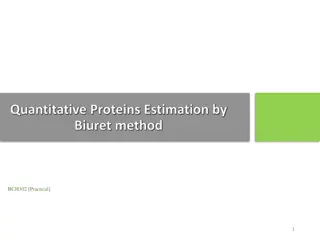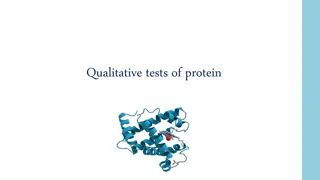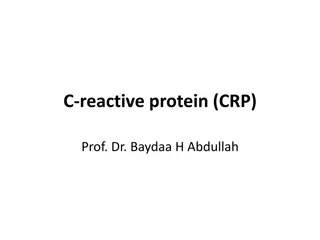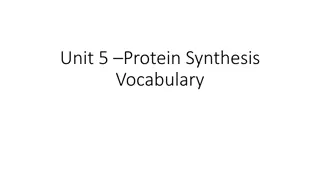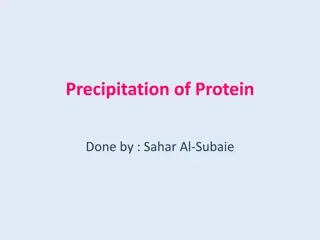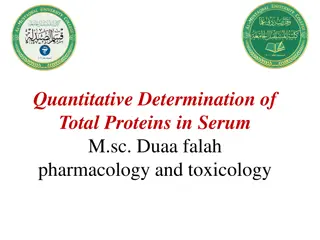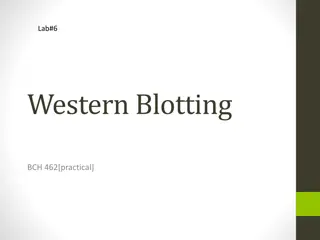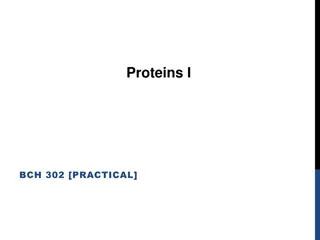Understanding Biuret Test for Protein Detection
The Biuret Test is a method used to detect the presence of proteins by identifying peptide bonds, which form the basis of protein structure. By utilizing a specific Biuret reagent, proteins can be quantitatively analyzed based on the color change observed. The test relies on the reaction between copper ions and peptide bonds in an alkaline solution, resulting in a violet color indicative of the presence of proteins. This process is essential in various scientific fields for protein identification and analysis.
Download Presentation

Please find below an Image/Link to download the presentation.
The content on the website is provided AS IS for your information and personal use only. It may not be sold, licensed, or shared on other websites without obtaining consent from the author. Download presentation by click this link. If you encounter any issues during the download, it is possible that the publisher has removed the file from their server.
E N D
Presentation Transcript
BIURET TEST BIURET TEST For protein detection and quantitative analysis
Aim of Biuret Test The Biuret Test is done to show the presence of peptide bonds, which are the basis for the formation of proteins. These bonds will make the blue Biuret reagent turn purple.
Structure of Biuret Solution Biuret reagent, made of sodium hydroxide and copper (II) sulfate, is used for determining the presence of protein in a sample. The test relies on the reaction between copper ions and peptide bonds in an alkaline solution. A violet color indicates the presence of proteins.
Peptides contain three or more amino acid residues form a colored chelate complex with cupric ions (Cu2+) in an alkaline enviroment contain sodium potassium tartrate. Single amino acids and dipeptide do not react with biuret solution but tripeptides and larger polypeptides or proteins will react to produce the blue to violet complex that absorbs the light at 540nm. One cupric ion forms a colored coordination complex with four to six nearby peptides bonds. Color intensity produced is proportional to th number of peptide bonds present in the reaction.
Principle The biuret reagent (copper sulfate in a strong base) reacts with peptide bonds in proteins to form a blue to violet complex known as the biuret complex . N.B. Two peptide bonds at least are required for the formation of this complex.
Procedure Sample Preparation Measure different amount of Egg Albumin (0.250,0.500,0.750,1.000)g individually . Use distilled water for preparing clear solution of egg albumin (50ml) of each . Stir it well with glass rod . Measure 0.500 g of Glycine on Sensitive balance . Use distilled water for preparing clear solution of Glycine solution (100 ml) . Stir it well with glass rod . Biuret Reagent Preparation Measure 8 g of NaOH on sensitive balance . Use distilled water for preparing clear solution of NaOH Solution (100 ml) . Stir it well with glass rod . Measure 1 g of CuSO4 on Sensitive balance . Use distilled water for preparing clear solution of CuSO4 Solution (100 ml) . Stir it well with glass rod .
Interpretation Observations Proteins are not present No change ( solution remains blue) Proteins are present The solution turns from blue to violet Peptides or peptones are short chains of amino acid residues The solution turns from blue to pink










